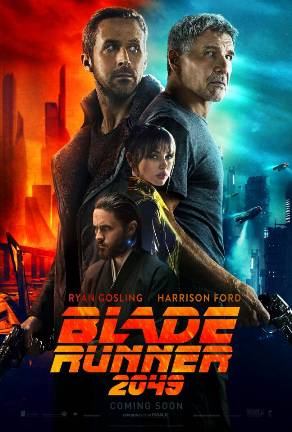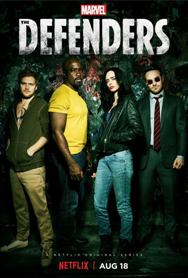It’s 1962 in America, and mute—though not def—Elisa (Sally Hawkins) works on the cleaning crew of a secret government laboratory with Zelda (Octavia Spencer). Outside of work, her only friend is Giles (Richard Jenkins), an aging gay artist. One day a new team arrives at the base, including scientist Dr. Hoffstetler (Michael Stuhlbarg) and zealous patriot Richard Strickland (Michael Shannon). They are studying a humanoid river creature (Doug Jones) in hopes to find information to aid America against her enemies. Dr. Hoffstetler takes a scientific approach, while Strickland tortures the creature. Elisa sneaks in to see it—or him—bring eggs and music and sign language, and forges a connection.
Earlier this year Universal attempted to bring back their monster franchise by taking various things they’d done before with mummies and slapping them all together. It failed. Here, Guillermo del Toro essentially reboots The Creature From the Black Lagoon, bringing in new ideas and a form of storytelling rarely used for monster movies (at least ones not made by him), and slips it into a different genre, and succeeds spectacularly. This is how you revisit old material—by touching the past while reaching for something new. There have been many films like The Mummy before. There’s never been another The Shape of Water.
This is a fairytale, one that involves politics and antifascism, diversity and oppression, and loneliness and need. It sounds theme-heavy, and it is, but I wasn’t pulled out of the film’s world by the messages, but rather they seeped into me with hardly a notice, as The Shape of Water is about character first. Zelda and Dr. Hoffstetler are drawn so deeply that I can imagine their un-produced movies. I know who they are, what they want, how they feel, and how they fit in. Then there is Strickland, the icon of the American way twisted into sickness. This is the part Shannon has been practicing for. He’s specialized in the near-psychotic that is easy to hate and it has all just been a warm-up. Strickland is alive and I knew him as well as the others. I hated him too, but del Toro knows this, so gives me comfort along the way. Yes, Strickland makes others suffer, but he suffers right there with them. And if you don’t think there’s symbolism in play in what happens to him, you aren’t paying attention. It is no accident that against this villain del Toro arrays three outsiders, nor that Strickland is so extreme on being the foundation of his America that he too ends up as an outsider. That’s the funny thing with fascism: in fighting to be part of something and exclude others, you end up alone.
But the character that matters is Elisa and she is so real. I feel her ache, her desire, her longing, her weakness and strength. del Toro understands that cinema is not about thought, but emotion, and he’s found a perfect partner in Hawkins.
Lesser artists approach similar subject matter coldly, but that’s not how The Shape of Water works. Of course belonging, equality, hope, and happiness are expressed sexually. How else would they be expressed? del Toro is a very sensual filmmaker and he brings that to the center. This film is about sex, same as life is. Elisa needs to be touched, and again, if you are missing the symbolism…
As for the nuts and bolts of filmmaking, The Shape of Water is remarkable nearly across the board. The sets are amazing, the cinematography is fantastic and the colors… Oh, the colors. Can we send someone over at WB who’s working on the DCEU to del Toro and company to talk about color? It’s as dark as Batman V Superman, but it is never drab; it is wondrous. Awards were invented for this film. If I ran the Oscars, it would be up for cinematography, score, production/art design, and makeup, besides director, writer, and a couple acting slots.
Is it perfect? No. It could have been generally tightened. And the Giles character should have been cut way back. Yes, someone is needed for Elisa to bounce things off of, but that’s all he’s needed for. The rest of his story is redundant and better handled by our other outsiders. And I was a bit distracted with the similarities between the Creature and Ape Sapien that Jones played in Hellboy. But when the credits start to scroll, you won’t be thinking about a few unnecessary moments, but about Elisa and a river god and the beauty of it all.




 I was asked by a friend (yes, a real one, not just a Facebook one) what the Best ‘50s—early ‘60s science fiction films were. I asked if we were talking “best” or “most important” and he said “Why not both?” As I’ve just finished a panel at Dragon Con on the subject, and making that distinction, it is a pair of easy lists for me.
I was asked by a friend (yes, a real one, not just a Facebook one) what the Best ‘50s—early ‘60s science fiction films were. I asked if we were talking “best” or “most important” and he said “Why not both?” As I’ve just finished a panel at Dragon Con on the subject, and making that distinction, it is a pair of easy lists for me.





